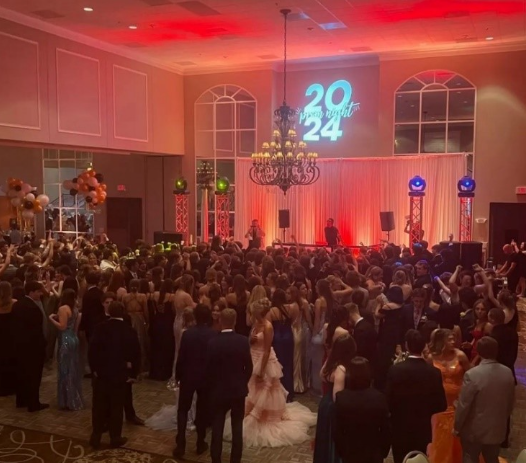Dress code
Originally, I had planned to start this article with one of those cheesy attention-getters or maybe a rhetorical question. I asked my roughly 150 snapchat followers for any stories about getting dress-coded instead, and ended up hearing from 15 people. All of these responses were from girls. Some of them I’ve barely had a conversation with, yet when this opportunity appeared to share what they have felt as injustice, they were eager to finally be able to speak.
Every girl has the phrases “three fingers width” and “fingertip length” practically seared into her brain. We are drilled to scrutinize our bodies and the outfits that cover them from kindergarten to high school, but why is the dress code always so heavily impressed on young girls instead of boys? The most common explanation shared with me is to ensure that there are no distractions to learning in class. This is a good justification because after all, school should be for learning. However, when a girl is dress-coded it is a huge distraction to not only her learning, but also to those around her. It’s never a student reporting a classmate for “distracting” clothes, but rather the adults of the school stopping their teaching to take a girl out of class.
During the rules presentation administration explained to us that these dress rules apply for all students, and it is my opinion that no student or woman in general should feel uncomfortable in the clothes that make them confident and happy. But the dress code as it stands often does make students feel uncomfortable – and I’d assume it is also uncomfortable for the adults in the building to have the conversations about dress code violations in order to issue discipline. In all of my years in school, I have never heard a story of a boy getting dress coded. Our schools guarantee that if a boy were to be breaking the rules that they would suffer the same consequences. In another conversation I had with student Mckenna Lee, she told me about a female friend in her class who was dress coded for a particular logo on her shirt. In the same class, a boy sat with the same image on his shirt, but he suffered no repercussions. (It was later explained to me that this logo has many alternative meanings that could potentially generate violence.) But this incident still begs the question: is the dress code truly about the clothes, or about the students who wear them?
What happens to those who take a stand against the dress code? In conversation with Sophie Bruozas, she told me about her experience with arguing for her right to wear what she wants. After standing up to an adult and asking what the problem with her outfit was, she was pulled aside and spoken to in what she considered a condescending tone. While using this patronizing tone, the adult still could not come up with a reason as to why her outfit should matter. If a student is being dress-coded, they should have a right to know what has been deemed so off-putting and why. That is, unless the reason these clothes are so offensive is actually because of the viewer and not the wearer. Which, ultimately, seems to be the case both in and out of school.
Finally, why is it the fault of the girls’ clothes and not the fault of the boys who are supposedly distracted by the width or length of material. If our schools are places of learning, we should consider educating our boys to behave like civilized individuals around other students. Boys should not be distracted, uncomfortable, or disturbed by anything another student is wearing, and if they are, that is due to their own issues. The boy with the distraction issue should be moved somewhere he can learn properly, instead of the girls having to miss class for the eyes of someone else.
But these negative opinions of our district’s dress code rules are not falling on deaf ears. Recently, I had the pleasure of sitting down with Dr. Feehery, a member of our district administration, who is working with students to create a more progressive dress code. Before becoming an administrator, Dr. Feehery was a dean at Lincoln-Way East for many years and stated that this situation was ironic for her as she used to be a strict enforcer of the dress code she now seeks to change. She acknowledges that although it is not explicitly written, there is a heavy gender bias against girls in the current dress code.
During our conversation, Dr. Feehery brought up this concept of distraction v. disruption. One of the major issues she has with the dress code is that it is trying to prevent distraction when it should be focused on disruption. By focusing on distraction, we blame the victim of someone else’s gaze, when the person who is distracted by another person’s clothes holds the responsibility. Dr. Feehery believes that we should be more focused on preventing disruption, those who want to incite hate or violence through their decisions of what to wear. The biggest problem with this argument Dr. Feehery claimed, even though it can have a written explanation of the expectations, it comes down to how the enforcers of it choose to interpret these rules. With the new dress code, she hopes that embarrassing students or having them lose class time will be a thing of the past.
Hopefully, this new dress code will see that students will own what they wear not because they have to, but because it’s what they like and what makes them comfortable, said Dr. Feehery. She is putting the responsibility in the hands of the students to have more adult-like freedoms and to use their better judgment to uphold academic decorum. The new dress code will be something of a compromise between staff and students, trying to uphold modesty and decency while also not trying to fight fashion and expression.
I want to end this article by giving my sincerest thank you to the girls who shared their thoughts and stories with me. I also want to offer my apologies to them. That they felt dehumanized, sexualized, or discriminated against by the current rules. By speaking out about your experiences with the dress code, maybe we can help the Lincoln-Way school district to work with its students to create a healthier environment. Dr. Feehery has high hopes that the school board will accept the new dress code sometime in the next few months, having it put in place next year.






